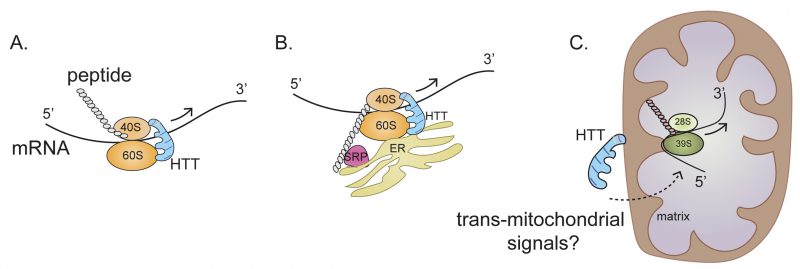Back to article: Ribosome traffic jam in neurodegeneration: decoding hurdles in Huntington disease
FIGURE 2: HTT (wtHTT and mHTT) binds to 40S and 60S ribosomal subunits and regulates the ribosome movement by acting as “molecular brake” thereby altering the ribosomal occupancy of selected cytoplasmic mRNAs (A), ER-associated mRNAs (B), and mitochondrially-encoded OXPHOS mRNAs (C). HTT is depicted as scaffolding protein. Arrow indicates the direction of ribosomal movement. Dotted arrow indicates potential signals through which HTT may. regulate mitochondrial mRNAs ribosome translocation. See text for details.

